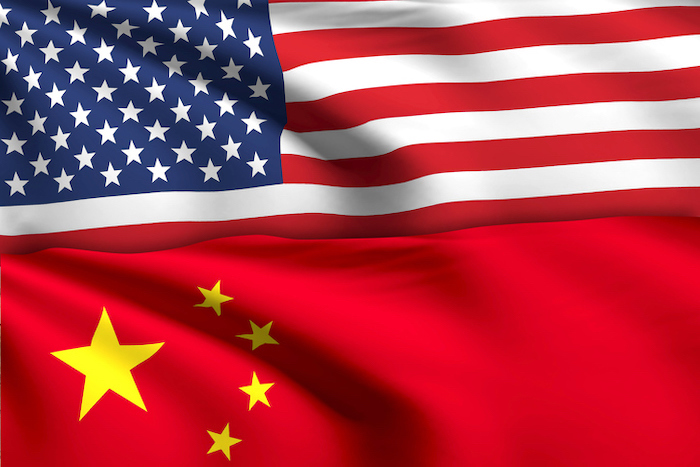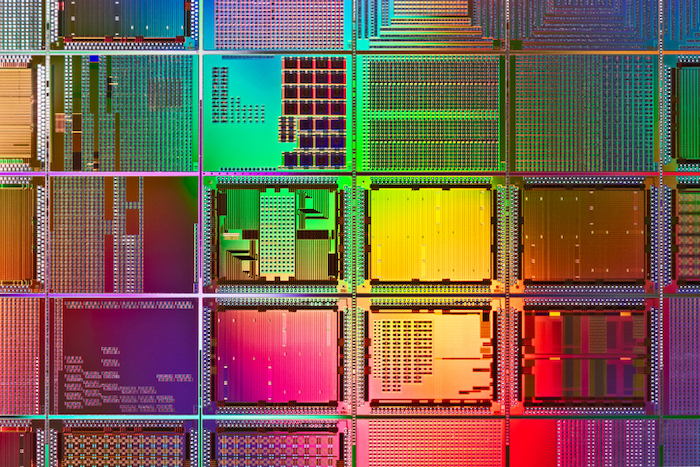A time for choosing

What’s new: Jim Carafano (@JJCarafano) and I (Klon) have published a new article arguing fielding high-technology is now as important to national security as is fielding traditional military capabilities like planes and tanks.
Why this matters: The article argues the private sector’s share of the national security burden is growing and that this has significant implications for government and industry.
Key points:
-
“The technologies that will determine the United States’ ability to secure its people and interests are overwhelmingly being developed for commercial purposes in the private sector … This leaves the national defense more dependent on the private sector than ever before, precisely as China is emerging as a true-peer competitor and rival economically, technologically and militarily.”
-
“…The ability of the United States to invent, design, build, deploy and secure advanced technologies – and their key components – is as important to national security as the nation’s capacity to field traditional military capabilities.”
-
“With this in mind, it follows that new partnerships between the government and industry are essential.”
-
“The government must accept the reality that it is a national security stakeholder and not the stakeholder. Many of the world’s leading technology companies have global interests and influence on par with many nations – they have a legitimate place at the geopolitical table.”
-
“American technology companies must acknowledge their growing national security responsibilities. They must also accept the fact that Great Power competition is returning and that this return requires them to choose sides.”
-
“While the Chinese market may be lucrative, it is also a moral minefield and ultimately a dead end for Western companies. American companies’ submission to Beijing’s predatory demands on intellectual property, proprietary information, trade secrets, data and other assets weakens American economic competitiveness, individual and national cybersecurity, and broader national security to the degree that this capitulation enables China’s technological ascendance over the U.S. This participation also gives cover to Beijing’s rampant political oppression and human rights violations.”
-
“Ultimately, western technology companies and the US government must recognize that the long-term interests of both are better served through national security partnerships. They should do this out of patriotism, out of economic interest, and because these partnerships enable the expansion of truly free markets and human thriving around the world.”
-
“Such partnerships are needed in several technologies, but in our view, fifth-generation wireless networks (5G), artificial intelligence (AI) and quantum computing should be near-term priorities.”
One more thing: We published this with Risky.Biz — one of the leading sources of news and commentary on information security, foreign policy, and the tech industry. We did this because (1) it’s a great publication and (2) we believe this type of direct engagement with industry is critical for the types of partnerships discussed in the article.
White House announces 5G plan

What’s new: The White House has announced a plan to to accelerate the development of US 5th generation (5G) wireless networks by making critical mid-band spectrum available for private use.
Why this matters: Currently, this wireless frequency is used by DoD for high-power radar but the Pentagon has determined it can share its spectrum without compromising critical capabilities.
Key points:
-
5G is a big deal for consumers and business, promising massive performance improvements like one gigabit/second downloads and less than 10 millisecond latency.
-
But the technology is about more than faster phones. These new networks will form the central nervous system of the new economy and they will be the foundation of modern governance.
Here are some other facts (according to the Trump Administration):
-
WH & DOD identified 100 megahertz of new mid-band spectrum in 3 gigahertz range (3450-3550);
-
Will be contiguous, coast-to-coast spectrum access;
-
Will be available December 2021;
-
Wireless can begin operating mid-2022;
-
DOD is working a transition plan for cost of transitioning away from the spectrum. The plan goes to a transition panel for approval. DOD will need to do congressional notification;
-
FCC will auction spectrum after auction rules are set (~18 months); and,
-
93% of US population will have unencumbered access to this spectrum when available. Rural areas will need additional carrier infrastructure, but spectrum should be available.
One more thing: The nation’s Chief Technology Officer and Acting Undersecretary of Defense for Research and Engineering, Michael Kratsios, has also announced the US plans to use military bases as “sandboxes” for 5G experimentation. The goal will be to advance American use of 5G, AI, and other technologies to counter the rise of China.
-
“If one of our telecom companies wants to do a test in, say, Reno, Nevada, the amount of regulatory hurdles they need to go through is extraordinarily daunting and bureaucratic,” he told WIRED. “The DOD can be a home for testing technologies that could have massive upside to [military] deployment, but also for the nation at large.”
**Special thanks to Sr. Fellow Lora Ries (@lora_ries) for her help on this report.
This week in semiconductors

What’s new: Three new developments this week demonstrate semiconductors are at the intersection of economic, foreign, and national security policy.
Why this matters: The semiconductor industry is increasingly consolidating and this is causing nations around the world to think anew about how they will maintain access to these essential components.
First, Huawei says US pressure on the company’s suppliers is making it impossible to produce their flagship Kirin chipsets.
-
In May, the US required American semiconductor suppliers to obtain a license before doing business with Huawei — all but killing support for China’s telecommunications behemoth.
-
Huawei’s HiSilicon group depends on US software to design its chips and it outsources the manufacturing of the chips to Taiwan Semiconductor Manufacturing Co (TSMC), which relies on US equipment.
Second, Qualcomm says the ban should be lifted so that it can sell to Huawei.
-
The American chip company is making the rounds and telling policymakers that the ban will not prevent Huawei from getting the components it requires and, instead, risks giving foreign firms a chance to swoop in and win billions in sales.
-
“If Qualcomm is subject to export licensing, but its foreign competitors are not, U.S. government policy will cause a rapid shift in 5G chipset market share in China and beyond,” said the company. That would hamper American research and leadership on 5G issues, it said, calling that “an unacceptable outcome for U.S. interests.”
Finally, third, Chinese hackers are apparently pillaging Taiwan’s chip industry.
-
According to a Black Hat presentation by cybersecurity firm CyCraft, Chinese attackers have compromised at least seven Taiwanese chip companies in the last two years.
-
Dubbed “Operation Skeleton Key,” the systemic attacks appear to be focused on harvesting chip-related intellectual property, code, designs, and software development kits.
-
CyCraft says the attackers are tied to mainland China, possibly the Beijing-backed Winnti hacker group, (AKA “Barium” or “Axiom”).
What we’re thinking: Constraints on chip supplies are having their intended effect on Huawei and on China more broadly. And while China has been stealing semiconductor designs and data for a long time, it’s reasonable to conclude these efforts are increasing in light of US controls. Finally, the concerns raised by Qualcomm are legitimate but not dispositive. We think it’s a good idea to stay-the-course while constantly balancing the various economic, national security, and political interests that are at stake.
Watch: AI vs. fighter pilot dogfight

What’s new: Next week, DARPA will host its third and final AlphaDogfight Trial online, according to Engadget.
Why this matters: The trial will conclude in a matchup between the top AI and live Air Force fighter pilot, both of which will be controlling a virtual F-16.
Key points:
-
The trial will be held August 18-20.
-
The AlphaDogfight Trials seek to expand DARPA’s base of AI developers under the Air Combat Evolution (ACE) program — a program intended to build human trust in AI and to automate air-to-air combat.
-
Importantly, DARPA doesn’t want to replace human pilots with AI. It wants to teach both how to fight together.
-
“Regardless of whether the human or machine wins the final dogfight, the AlphaDogfight Trials is all about increasing trust in AI,” said Col. Dan “Animal” Javorsek, program manager in DARPA’s Strategic Technology Office. “If the champion AI earns the respect of an F-16 pilot, we’ll have come one step closer to achieving effective human-machine teaming in air combat, which is the goal of the ACE program.”
The trial will be live streamed by Johns Hopkins University’s Applied Physics Laboratory, who is also competing in the trial.
What we’re thinking: We asked Heritage’s Senior Research Fellow for Defense Policy (and former Commander of the USAF Thunderbirds), “JV” Venable (@JVVenable), what he thought about the competition. Let’s just say his response was definitive, but not appropriate for this newsletter.
Belarus unplugs internet

What’s new: Cellular service and internet service in Belarus have been down since Sunday.
Why this matters: The network failures appear to be caused by the government in the midst of widespread protests over the country’s contested presidential elections.
-
Protests broke out after it was announced that President Aleksandr Lukashenko had won a sixth term with nearly 80 percent of the vote.
-
Citizens around the country have gathered publicly to decry Lukashenko’s foreign policy, his handling of the COVID-19 pandemic, and other policies.
-
The government has responded with police and military force and is now the prime suspect behind the communications failures.
You can read more on these issues here.
Empty stores could be Amazon fulfillment centers

What’s new: Amazon is speaking with the largest US mall owner about converting empty department stores into distribution centers.
Why this matters: The e-commerce disruption continues.
Key points:
-
According to the Wall Street Journal (paywall), Simon Property Group Inc. is negotiating with the online retailer as they try to unload a growing number of empty and failing stores.
-
The talks are reportedly centered on J.C. Penney Co. Inc. and Sears Holdings Corp. locations.
-
Both department store chains have filed for chapter 11 bankruptcy protection and Simon malls have 63 Penney and 11 Sears stores, according to its most recent public filing in May.
-
Amazon typically uses distribution centers to store everything from books and sweaters to kitchenware and electronics until delivery to local customers.
What we’re thinking: While the shift to online shopping has been happening for quite a while, the COVID-19 pandemic has likely solidified and accelerated this change.







Please note that we at The Dispatch hold ourselves, our work, and our commenters to a higher standard than other places on the internet. We welcome comments that foster genuine debate or discussion—including comments critical of us or our work—but responses that include ad hominem attacks on fellow Dispatch members or are intended to stoke fear and anger may be moderated.
With your membership, you only have the ability to comment on The Morning Dispatch articles. Consider upgrading to join the conversation everywhere.